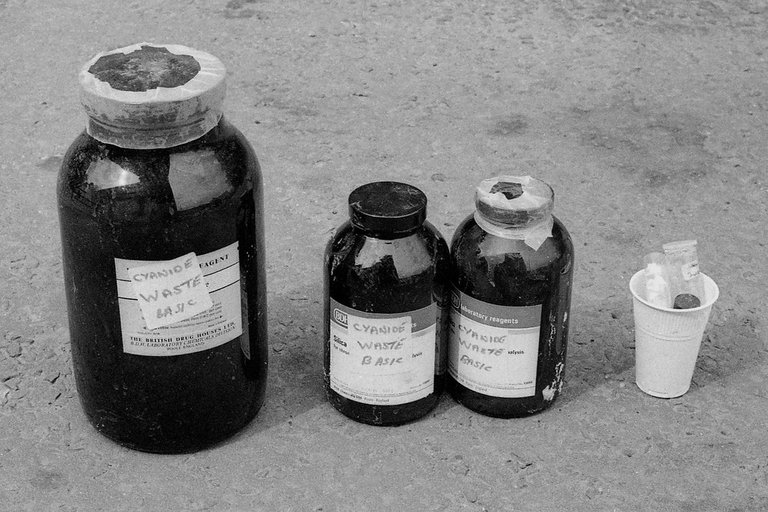Cyanide Toxicity and Why We Haven't Died From Vegetable Acid Poisoning
You must have heard about Vegetable Acid poisoning, but if you haven't heard about it, then welcome to my post today, I will be elucidating you on vegetable acid poisoning. have you tried eating lots of fruits, possibly bitter almonds, only to realize that you have ingested a large amount of toxic acid, which would lead to you having symptoms such as abdominal pain, vomiting, diarrhea, dizziness, headache, confusion, and difficulty breathing? Then I guess you are starting to understand me.
Vegetable acid poisons are present in fruits and vegetables such as almonds, peach, apple, and different vegetables. This poison can exist in two forms being Hydrocyanic acid which is an acid as the name implies, and Cyanide which is a salt. Cyanide is the salt of the acid. Hydrocyanic acid is colorless but has a bitter almond penetrating odor, and when it reacts with base od any metal, it is converted to cyanide salt which is whitish is color. It causes toxicity by binding to the iron atom of cytochrome C oxidase, stopping electron transport chain which would lead to cytotoxic anoxia or histotoxic anoxia. It also have a corrosive action on mucus membrane. Ingesting cyanide would mean a reaction between the Hydrochloric acid (HCL) in the stomach converting the cyanide into Hydrogen cyanide in the body. Hydrogen Cyanide is a poisonous gas to the body. The toxic substance enters the body through ingestion, it can absorbed through mucus membrane, and it can also be inhaled in its gaseous form.
Cyanide toxicity can be acute or chronic. Acute toxicity can occur as a result of hydrocyanic acid gas being inhaled, or its liquid form ingested, or its salt can also be injested. If its gas is inhaled, the victim dies at the spot, if ingested in liquid form, it can lead to instantaneous death, delayed death or momentary relief. In acute cases, if the salt is ingested, HCL acts on it to become hydrogen cyanide which could lead to respiratory paralysis. The onset of symptoms is in few minutes after ingestion. With chronic poisoning, the person is exposed to minute doses of hydrocyanic acid or cyanide over time. It is often common with people who use materials that contain cyanide. Symptoms of its toxicity includes vomiting, headache, mental retardation, and chronic cachexia wasting. It can become fetal when hydrocyanic acid is consumed above about 50mg, and in the case of potasium cyanide, about 200mg can become fetal leading to death.
Treatment of cyanide poisoning can be effective if administered immediately as it is very effective, and the cytochrome complex needs to be reversed by administering hydroxocobalamin, or methylene blue which will help in the conversion of the hemoglobin to methemoglobin. Cyanide will react to the methemoglobin to form cyanmethemoglobin a bright red crystalline compound which is non-toxic. Sodium thiosulfate or iron and potassium carbonate is used as gastric lavage to form prussian blue (inert substance), also when gastric lavage aren't available, emetics can be given to the patient to help with emptying the gastrointestinal tract. In the case of inhalation, the patient should be removed from the site where the inhalation took place, and the patient should be given 100% oxygen. Sodium nitrite and sodium trisulfate should be administered intravenously (IV). This converts hemoglobin to methemoglobin after which cyanide reacts with the methemoglobin to form cyanmethemoglobin which is a non toxic form.
Death from cyanide is usually due to respiratory paralysis and dead bodies (post motem )findings can have bitter almond smell, pink patches on face and lip, cherry red lividity, frothing at angles of the mouth, dilated pupils and glassening eyes, victim could experience the rigor mortis death phase early if death occur as a result of a seizure. Findings internally will include pink mucus membrane in the stomach, post motem formation of cyanmethemoglobin as a result of hemoglobine being oxidized to metamoglobin, bitter almond smell in the stomach and other part of the body, Froth can be found in bronchi, hemorrhage of the pericardium, corrosion of the mouth (potasium cyanide), and the corrosion of stomach wall. Persons handling the sample when investigating can be affected causing hazards when inhaled.
It is no doubt that we might have in one way or the other consumed cyanide following the fact that it is found in Cassava and Lima Beans. Trust me when I say that the average Nigerian is a certified Garri consumer, it is even impressive that we have alias for Garri because it is one of the most popular food in the country but why aren't we dead? It depends on the amount consumed. For garri, according to a paper, about 80% of the cyanide has been removed during its processing which involves fermentation, soaking, and frying. If a person survives cyanide poison, they can suffer the effects of the poisoning which could lead to parkinson's disease, blindness, loss of muscle control, and neurological disorders.
Cyanide: Exposure, Decontamination, Treatment
Toxicological risk of melamine and cyanuric acid in food and feed
What to know about cyanide poisoning
Cyanide detoxification in cassava for food and feed uses

Fruits and vegestables often have toxic components. It is almost as if they do not like to be eaten.
Regardless. Here is a wine to match with your bitter almonds:
!WINE
Congratulations, @irivers You Successfully Shared 0.100 WINEX With @ireti.
You Earned 0.100 WINEX As Curation Reward.
You Utilized 1/1 Successful Calls.
Contact Us : WINEX Token Discord Channel
WINEX Current Market Price : 0.159
Swap Your Hive <=> Swap.Hive With Industry Lowest Fee (0.1%) : Click This Link
Read Latest Updates Or Contact Us
Thanks for your contribution to the STEMsocial community. Feel free to join us on discord to get to know the rest of us!
Please consider delegating to the @stemsocial account (85% of the curation rewards are returned).
Thanks for including @stemsocial as a beneficiary, which gives you stronger support.